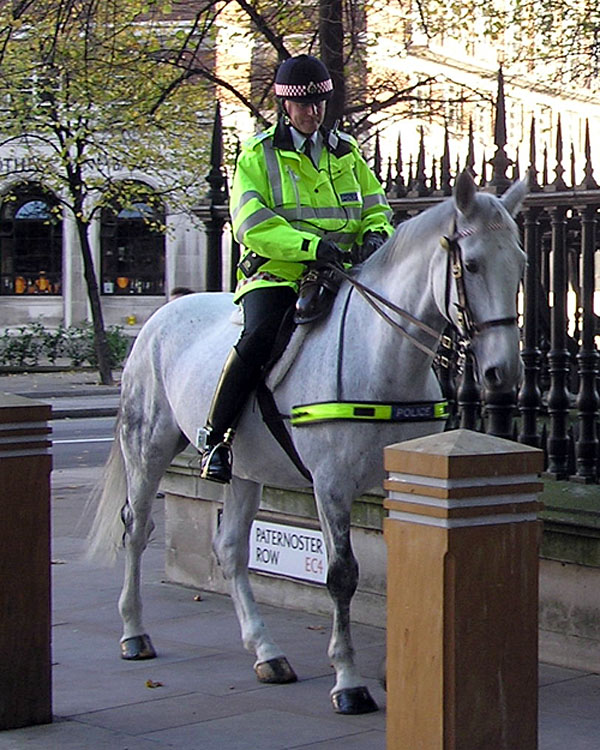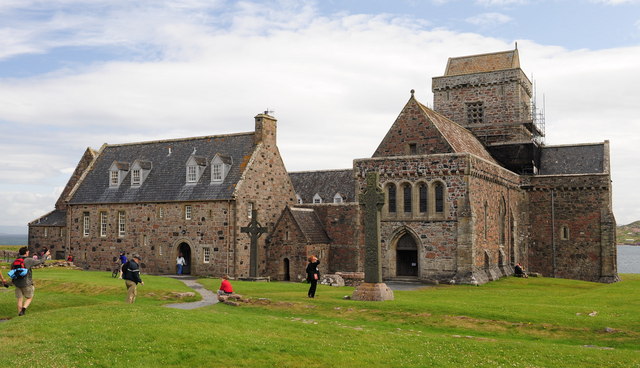|
Roman Catholicism In Scotland
The Catholic Church in Scotland, overseen by the Scottish Bishops' Conference, is part of the worldwide Catholic Church headed by the Pope. Christianity first arrived in Roman Britain and was strengthened by the conversion of the Picts through both the Hiberno-Scottish mission and Iona Abbey. After being firmly established in Scotland for nearly a millennium and contributing enormously to Scottish literature and culture, the Catholic Church was outlawed by the Scottish Reformation Parliament in 1560. Multiple uprisings in the interim failed to reestablish Catholicism or to legalise its existence. Even today, the Papal Jurisdiction Act 1560, while no longer enforced, still remains on the books. Throughout the nearly three centuries of religious persecution and disenfranchisement between 1560 and 1829, many students for the priesthood went abroad to study while others remained in Scotland and, in what is now termed underground education, attended illegal seminaries. An ea ... [...More Info...] [...Related Items...] OR: [Wikipedia] [Google] [Baidu] |
Christianity In Medieval Scotland
Christianity was probably introduced to what is now Lowland Scotland by Roman soldiers stationed in the north of the province of Roman Britain, Britannia. After the collapse of Roman authority in the fifth century, Christianity is presumed to have survived among the Britons (historical), British enclaves in the south of what is now Scotland, but retreated as the pagan Anglo-Saxons advanced. Scotland was largely converted by Irish missions associated with figures such as St Columba, from the fifth to the seventh centuries. These missions founded monastic institutions and collegiate churches that served large areas. Scholars have identified a distinctive form of Celtic Christianity, in which abbots were more significant than bishops, attitudes to clerical celibacy were more relaxed and there were significant differences in practice with Roman Catholic Church, Roman Christianity, particularly the form of tonsure and the method of Computus, calculating Easter, although most of these i ... [...More Info...] [...Related Items...] OR: [Wikipedia] [Google] [Baidu] |
Religious Persecution
Religious persecution is the systematic oppression of an individual or a group of individuals as a response to their religion, religious beliefs or affiliations or their irreligion, lack thereof. The tendency of societies or groups within societies to alienate or repress different subcultures is a recurrent theme in human history. Moreover, because a person's religion frequently determines his or her sense of morality, worldview, self-image, attitudes towards others, and overall personal identity to a significant extent, religious differences can be significant cultural, personal, and social factors. Religious persecution may be triggered by religious or antireligion, antireligious stances (when members of a dominant group denigrate religions other than their own or religion itself where the irreligious are the dominant group) or it may be triggered by the state when it views a particular religious group as a threat to its interests or security. At a societal level, the dehumaniz ... [...More Info...] [...Related Items...] OR: [Wikipedia] [Google] [Baidu] |
Papal Jurisdiction Act 1560
The Papal Jurisdiction Act 1560 (c. 2) is an Act of the Parliament of Scotland which is still in force. It declares that the Pope has no jurisdiction in Scotland and prohibits any person from seeking any title or right to be exercised in Scotland granted under the authority of the Pope, on pain of proscription, banishment and disqualification from holding any public office or honour. Extract Usage The Scottish Catholic hierarchy was restored by Pope Leo XIII in 1878 without legal reaction and remains in place today. See also * Judiciary of Scotland *Scots law *Temporal jurisdiction (papacy) The Holy See exercised temporal power, as distinguished from its spiritual and pastoral activity, while the pope ruled the Papal States in central Italy. The Papal States ceased to exist following the capture of Rome in 1870 by the Royal I ... References External links 16th century in international relations 1560 in law 1560 in Christianity 1560 in Scotland Acts ... [...More Info...] [...Related Items...] OR: [Wikipedia] [Google] [Baidu] |
Paternoster Row
Paternoster Row is a street in the City of London that was a centre of the London publishing trade, with booksellers operating from the street. Paternoster Row was described as "almost synonymous" with the book trade. It was part of an area called St Paul's Churchyard. In time Paternoster Row itself was used inclusively of various alleys, courts and side streets. Largely destroyed during aerial bombing in World War II, the street's area is now the site of much of the post-war Paternoster Square development. Current route The street was devastated by aerial bombardment during World War II. In 2003 the area was pedestrianised with Paternoster Square, the modern home of the London Stock Exchange, at the west end, and a paved area around St Pauls' Coop and an entrance to St Pauls tube station at the East, bounded by St Pauls Churchyard, Old Change, New Change, Cheapside and Payner Alley. The route of Paternoster Row is not demarcated across the open areas, although there is a roa ... [...More Info...] [...Related Items...] OR: [Wikipedia] [Google] [Baidu] |
Scottish Reformation Parliament
The Scottish Reformation Parliament was the assembly elected in 1560 that passed legislation leading to the establishment of the Church of Scotland. These included the Confession of Faith Ratification Act 1560; and Papal Jurisdiction Act 1560. The legislation was not formally approved until 1567, when it was ratified by James VI. Background In 1559, John Knox returned to Scotland, marking a new effort in his battle to reform the nation. Scottish Protestants in the 1520s and 1530s were Lutheranism, Lutherans such as Patrick Hamilton (martyr), Patrick Hamilton and George Wishart, who translated the First Helvetic Confession written by Heinrich Bullinger, marking the impact of the Swiss Reformation. With the return of Knox from Geneva Scottish Protestantism, Protestants rallied around him and the Scottish Protestant Reformation, Reformation continued to be characterised by the example of John Calvin in Geneva. Queen dowager Mary of Guise, acting as regent for her daughter Mary, Qu ... [...More Info...] [...Related Items...] OR: [Wikipedia] [Google] [Baidu] |
Scottish Literature
Scottish literature is literature written in Scotland or by Scottish writers. It includes works in English, Scottish Gaelic, Scots, Brythonic, French, Latin, Norn or other languages written within the modern boundaries of Scotland. The earliest extant literature written in what is now Scotland, was composed in Brythonic speech in the sixth century and has survived as part of Welsh literature. In the following centuries there was literature in Latin, under the influence of the Catholic Church, and in Old English, brought by Anglian settlers. As the state of Alba developed into the kingdom of Scotland from the eighth century, there was a flourishing literary elite who regularly produced texts in both Gaelic and Latin, sharing a common literary culture with Ireland and elsewhere. After the Davidian Revolution of the thirteenth century a flourishing French language culture predominated, while Norse literature was produced from areas of Scandinavian settlement. The first survi ... [...More Info...] [...Related Items...] OR: [Wikipedia] [Google] [Baidu] |
Iona Abbey
Iona Abbey is an abbey located on the island of Iona, just off the Isle of Mull on the West Coast of Scotland. It is one of the oldest History of early Christianity, Christian religious centres in Western Europe. The abbey was a focal point for the spread of Christianity throughout Scotland and marks the foundation of a monastic community by Columba, St. Columba, when Iona was part of the Kingdom of Dál Riata. Aidan of Lindisfarne, Saint Aidan served as a monk at Iona, before helping to reestablish Christianity in Northumberland, on the island of Lindisfarne. In the 12th century, the Macdonald lords of Clan Donald made Iona the ecclesiastical capital of the Royal Family of Macdonald, and subsequent Lords of the Isles into the early 16th century endowed and maintained the abbey, church and nunnery. Two of the Macdonalds (each named Angus) became Bishops of the Isles with the bishop's seat at Iona. St. Oran's chapel was the burial place for the Lords as evidenced by their gra ... [...More Info...] [...Related Items...] OR: [Wikipedia] [Google] [Baidu] |
Hiberno-Scottish Mission
The Hiberno-Scottish mission was a series of expeditions in the 6th and 7th centuries by Gaels, Gaelic Missionary, missionaries originating from Ireland that spread Celtic Christianity in Scotland, Wales, History of Anglo-Saxon England, England and Merovingian dynasty, Merovingian lands. Catholic Christianity spread first within Ireland. Since the 8th and 9th centuries, these early missions were called 'Celtic Christianity'. There is dispute over the relationship of the Hiberno-Scottish mission to Catholic Church, Catholic Christianity. Catholic sources claim it functioned under the authority of the Holy See, while Protestant historians highlight conflicts between Celtic and Roman clergy. There is agreement that the Mission (Christianity), mission was not strictly coordinated. As a whole, Celtic-speaking areas were part of Latin Christendom at a time when there was significant Catholic Liturgical Rites, regional variation of liturgy and structure, but a general collective venerati ... [...More Info...] [...Related Items...] OR: [Wikipedia] [Google] [Baidu] |
Picts
The Picts were a group of peoples in what is now Scotland north of the Firth of Forth, in the Scotland in the early Middle Ages, Early Middle Ages. Where they lived and details of their culture can be gleaned from early medieval texts and Pictish stones. The name appears in written records as an Exonym and endonym, exonym from the late third century AD. They are assumed to have been descendants of the Caledonians, Caledonii and other northern British Iron Age, Iron Age tribes. Their territory is referred to as "Pictland" by modern historians. Initially made up of several chiefdoms, it came to be dominated by the Pictish kingdom of Fortriu from the seventh century. During this Fortriu#Verturian_hegemony, Verturian hegemony, ''Picti'' was adopted as an endonym. This lasted around 160 years until the Pictish kingdom merged with that of Dál Riata to form the Kingdom of Alba, ruled by the House of Alpin. The concept of "Pictish kingship" continued for a few decades until it was ab ... [...More Info...] [...Related Items...] OR: [Wikipedia] [Google] [Baidu] |
Roman Britain
Roman Britain was the territory that became the Roman province of ''Britannia'' after the Roman conquest of Britain, consisting of a large part of the island of Great Britain. The occupation lasted from AD 43 to AD 410. Julius Caesar invaded Britain in 55 and 54 BC as part of his Gallic Wars. According to Caesar, the Britons had been overrun or culturally assimilated by the Belgae during the British Iron Age and had been aiding Caesar's enemies. The Belgae were the only Celtic tribe to cross the sea into Britain, for to all other Celtic tribes this land was unknown. He received tribute, installed the friendly king Mandubracius over the Trinovantes, and returned to Gaul. Planned invasions under Augustus were called off in 34, 27, and 25 BC. In 40 AD, Caligula assembled 200,000 men at the Channel on the continent, only to have them gather seashells () according to Suetonius, perhaps as a symbolic gesture to proclaim Caligula's victory over th ... [...More Info...] [...Related Items...] OR: [Wikipedia] [Google] [Baidu] |





